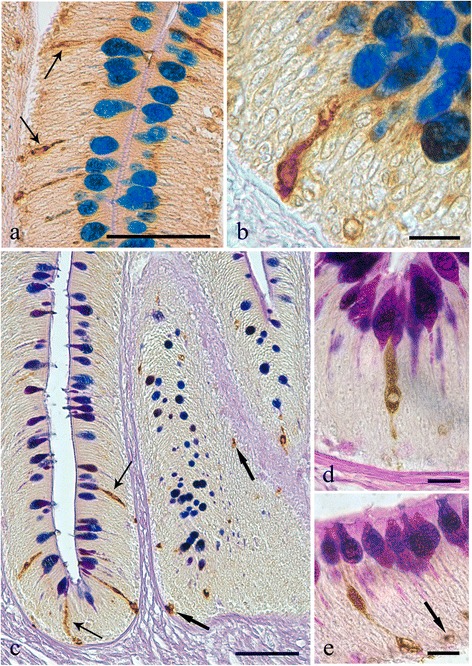Fig. 5.

Histological sections from the intestinal mucosa of Squalius cephalus parasitised by the acanthocephalan Pomphorhynchus laevis and treated with either the leu-enkephalin (a-b) or met-enkephalin (c-e) antisera followed by a subsequent AB/PAS stain for mucous cells. Several immunoreactive endocrine epithelial cells can be seen of which many are in close contact with the goblets of the mucous cells. Immunoreactive endocrine cells with differing morphologies can be seen and include: those of the closed type (c, e, thick arrows), the typical open type (a, c, thin arrows), the open type with a mid-epithelial body (d), and, the open type with a “reservoir-like” appearance to them (b, e). Scale bars: a, c: 50 μm; b, d, e: 10 μm
